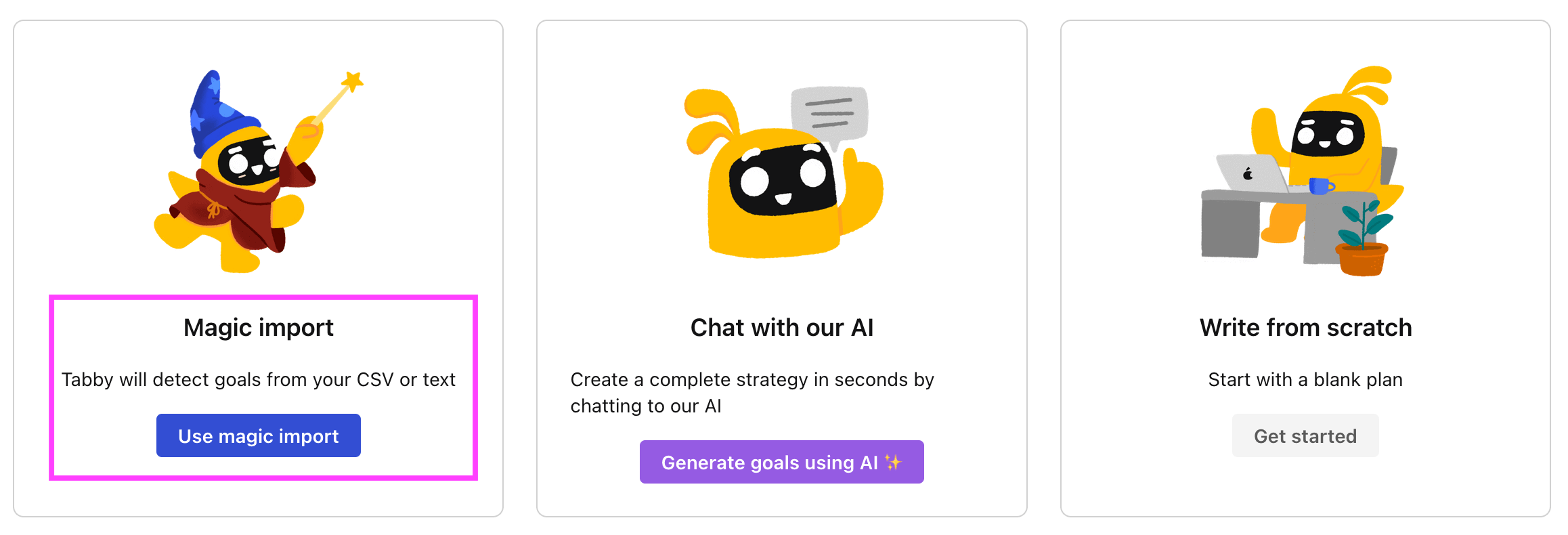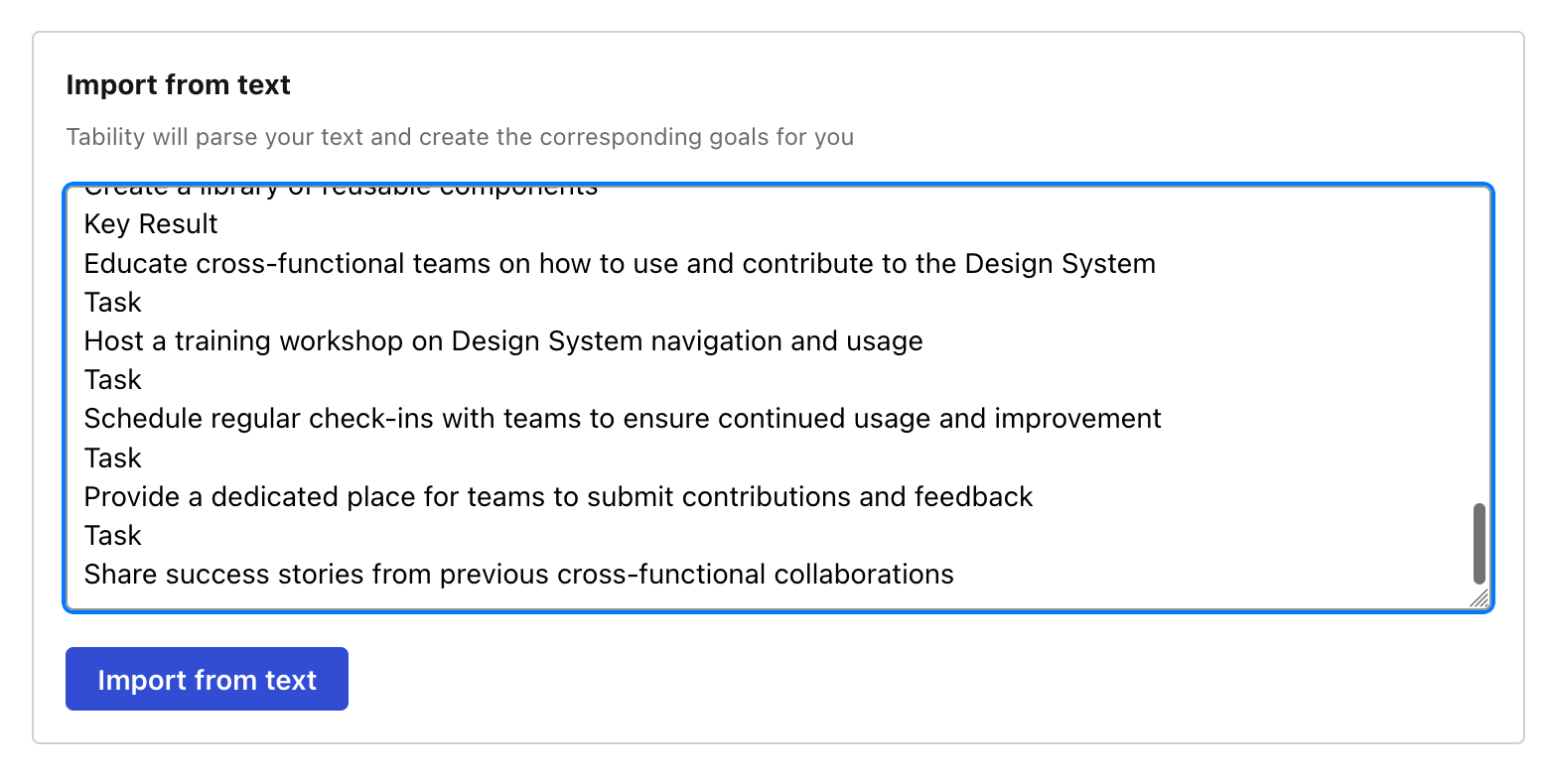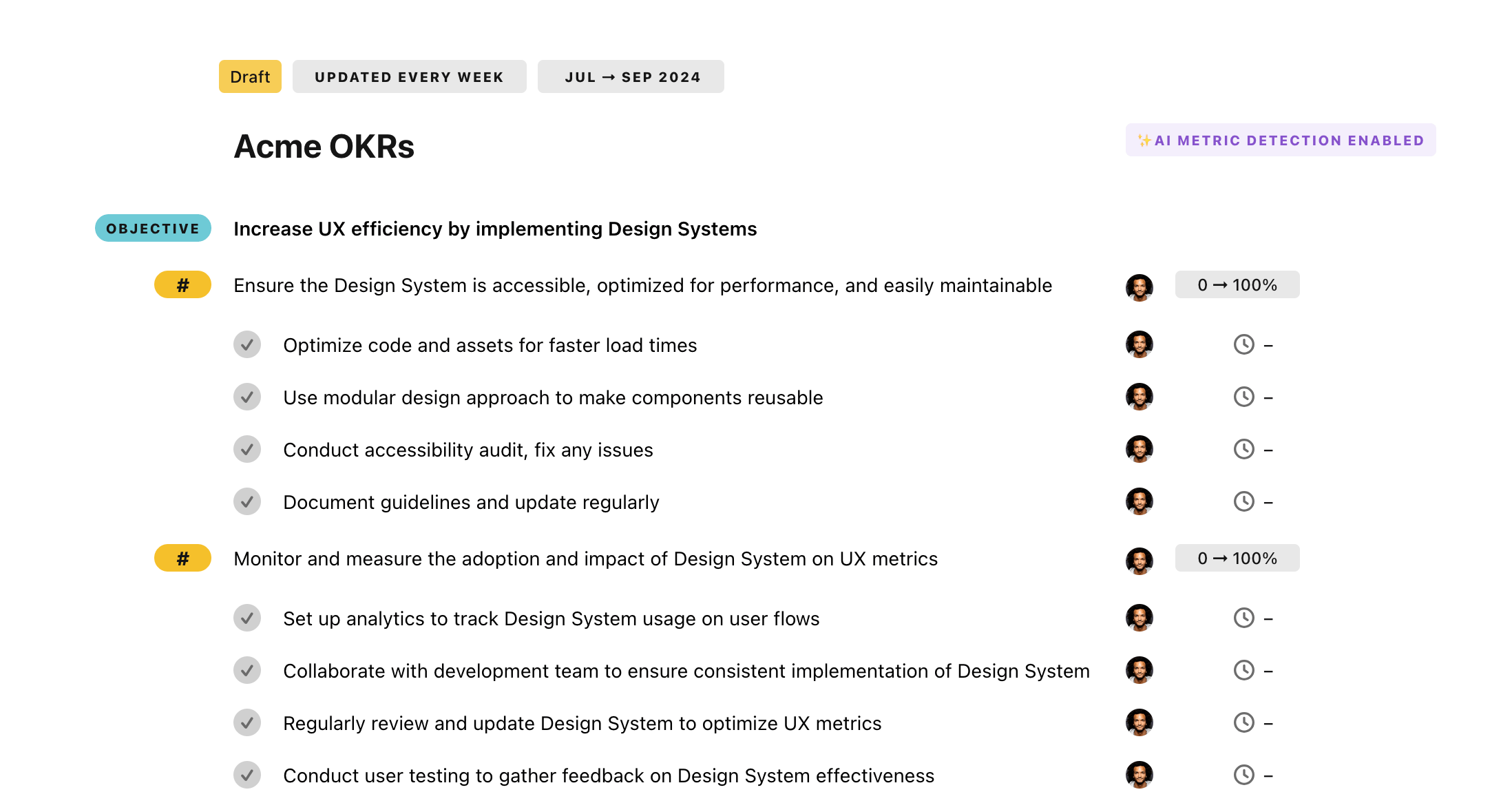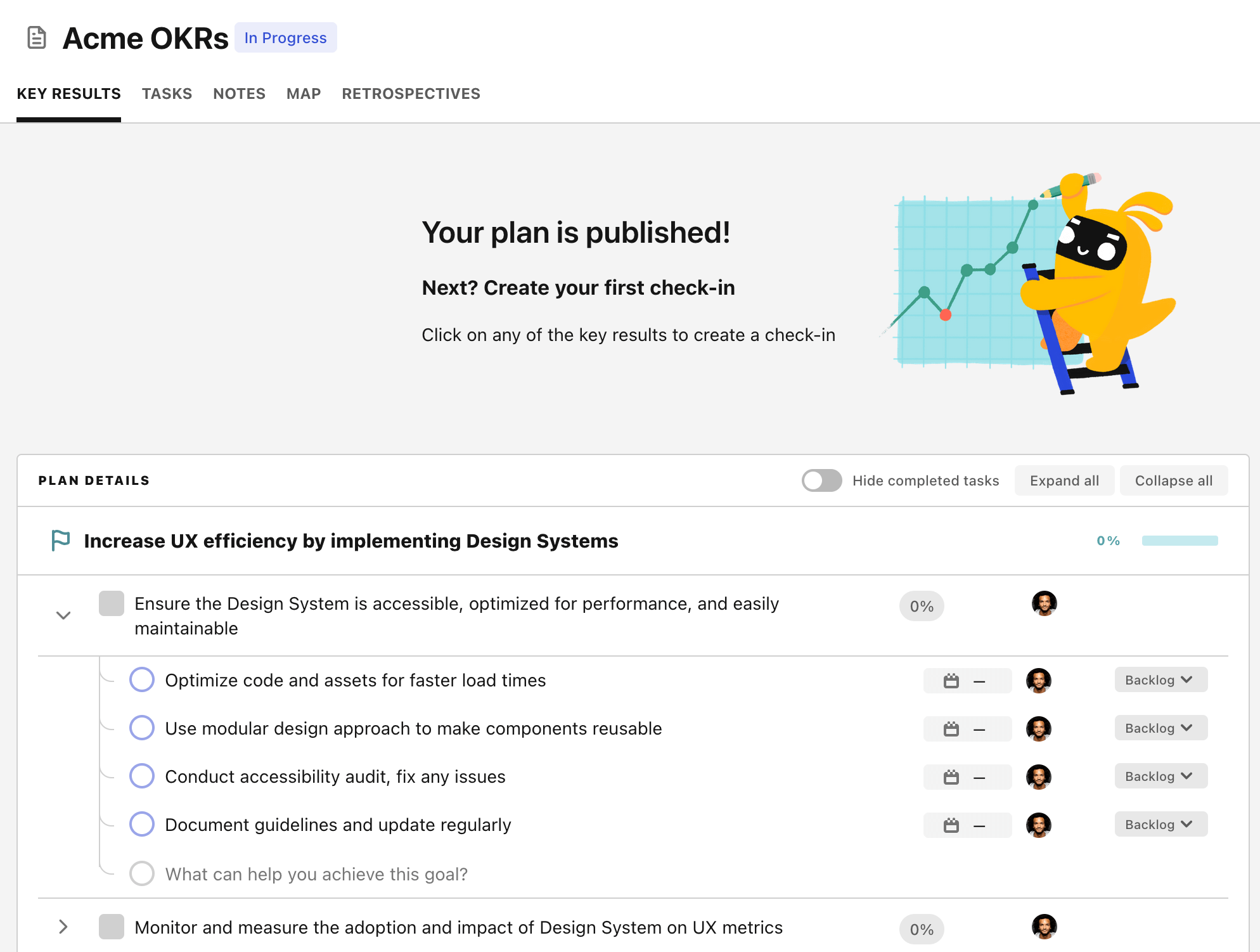OKR template to increase Internal Customer NPS
Your OKR template
Secondly, this OKR targets a 10% increment in the internal customer NPS score. Achieving this will require identifying customer pain points, communicating action points regularly, providing employee training on customer service, and devising feedback loops to resolve customer concerns efficiently.
The OKR also strives to diminish internal customer complaints by 20% via proactive problem resolution and service enhancement. This will necessitate streamlining processes, adopting a feedback system for issue identification, holding regular training sessions for communication and problem-solving skills improvement, and initiating quality control measures to monitor customer satisfaction.
Lastly, the OKR aims to promote a 15% increase in the participation rate in the internal customer satisfaction survey. This objective can be accomplished by emphasizing survey importance in meetings, providing incentives for participation, dispatching individualized email reminders, and simplifying the survey process.
ObjectiveIncrease Internal Customer NPS
KRImplement at least two new initiatives to enhance internal customer experience
Develop a comprehensive internal knowledge base to streamline information access and retrieval
Create a dedicated internal customer support team to provide timely assistance
Implement regular training sessions to enhance communication and problem-solving skills
Conduct a survey to gather feedback and identify areas for improvement
KRAchieve a 10% increase in internal customer NPS score
Conduct a survey to identify pain points and areas for improvement
Regularly communicate updates on actions taken based on customer feedback
Provide training to employees to improve customer service skills
Implement feedback loops to address customer concerns and gather suggestions
KRReduce internal customer complaints by 20% through proactive resolution and improved service
Streamline processes and ensure effective coordination among different departments
Implement a feedback system to identify potential issues and address them promptly
Conduct regular training sessions to improve communication and problem-solving skills
Establish quality control measures to track and monitor customer satisfaction levels
KRIncrease internal customer satisfaction survey participation rate by 15%
Conduct regular meetings to communicate the importance of survey participation to employees
Offer an incentive or reward for employees who actively participate in the survey
Send personalized email reminders to employees to complete internal customer satisfaction survey
Simplify the survey process by making it easily accessible and user-friendly
How to edit and track OKRs with Tability
You'll probably want to edit the examples in this post, and Tability is the perfect tool for it.
Tability is an AI-powered platform that helps teams set better goals, monitor execution, and get help to achieve their objectives faster.
With Tability you can:
- Use AI to draft a complete set of OKRs in seconds
- Connect your OKRs and team goals to your project
- Automate reporting with integrations and built-in dashboard
Instead of having to copy the content of the OKR examples in a doc or spreadsheet, you can use Tability’s magic importer to start using any of the examples in this page.
The import process can be done in seconds, allowing you to edit OKRs directly in a platform that knows how to manage and track goals.
Step 1. Sign up for a free Tability account
Go tohttps://tability.app/signup and create your account (it's free!)
Step 2. Create a plan
Follow the steps after your onboarding to create your first plan, you should get to a page that looks like the picture below.

Step 3. Use the magic importer
Click on Use magic import to open up the Magic Import modal.
Now, go back to the OKR examples, and click on Copy on the example that you’d like to use.

Paste the content in the text import section. Don’t worry about the formatting, Tability’s AI will be able to parse it!

Now, just click on Import from text and let the magic happen.

Once your example is in the plan editor, you will be able to:
- Edit the objectives, key results, and tasks
- Click on the target 0 → 100% to set better target
- Use the tips and the AI to refine your goals
Step 4. Publish your plan
Once you’re done editing, you can publish your plan to switch to the goal-tracking mode.

From there you will have access to all the features that will help you and your team save hours with OKR reporting.
- 10+ built-in dashboards to visualise progress on your goals
- Weekly reminders, data connectors, and smart notifications
- 9 views to map OKRs to strategic projects
- Strategy map to align teams at scale